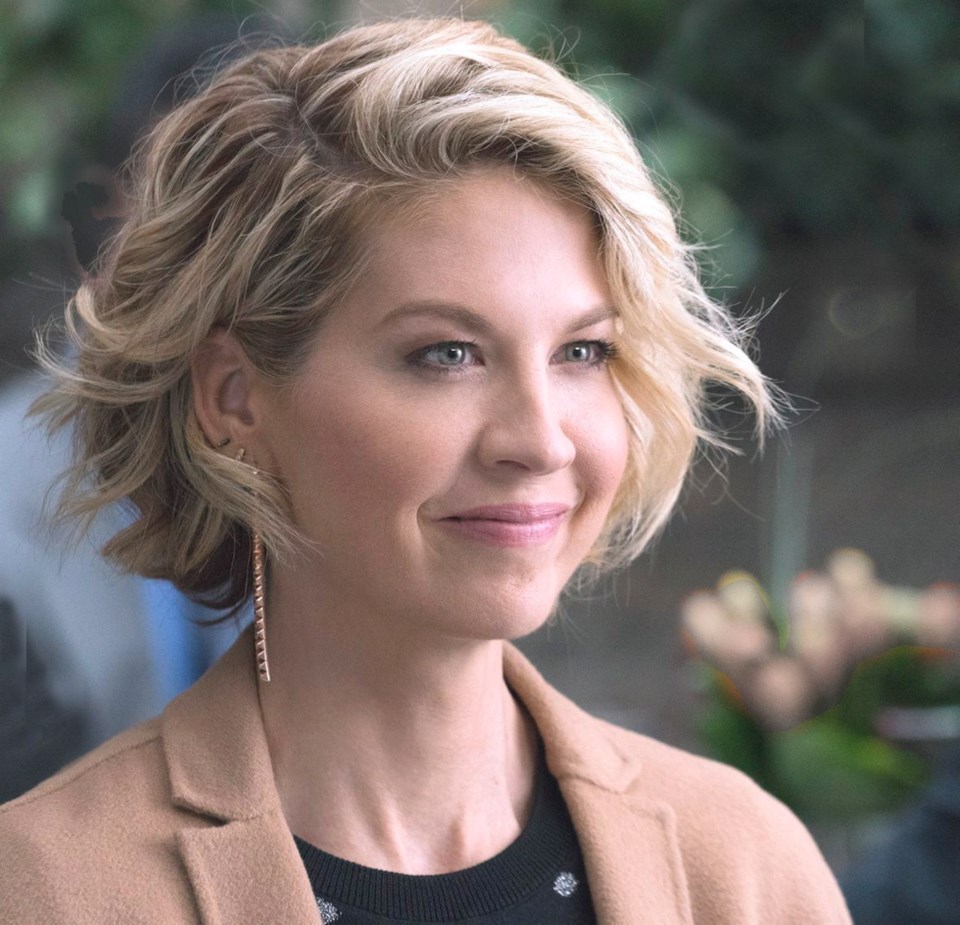PASADENA, California — While Jenna Elfman has performed with some of the best actors in the business, her new ABC sitcom marks a first for her. Her co-star is invisible.
For five years Elfman starred with Thomas Gibson in the hit, Dharma & Greg, and she went on to appear in Growing Up Fisher with J.K. Simmons, 1600 Penn, with Josh Gad, and Damages with Glenn Close.
But when Imaginary Mary arrives on March 29, Elfman will be emoting with thin air.
She plays a gung-ho career woman who falls for a guy with three children. When she finds herself coping with an instant family, she needs all the help she can get. That aid arrives in the form of her childhood imaginary friend, Mary.
While Mary is voiced by former Saturday Night Live star Rachel Dratch and appears to the audience as a round-faced cherub, she’s really invisible to Elfman when they’re filming.
Dratch is cutting the voice-over in New York and Elfman is emoting in L.A. Though Elfman has costarred with unseen characters before when she was upstaged by Daffy Duck and Bugs Bunny in Looney Tunes: Back in Action, this presents a whole new challenge, she said.
“When we were filming Looney Tunes, we had men in green suits, green screens, green little balls on sticks. There was not a lot of green-screen elements when we were filming this, because it’s CGI,” she said.
“This is a whole different sort of approach to animation. We had rehearsal with a stuffed, life-size puppet, and we had an amazing puppeteer, so we would rehearse with her. And we had a comedic actor on set to do all the lines. So I felt like I had a comedic partner, because Rachel is in New York,” she said.
“And then we would film one take with the puppet, so that the animators had a reference for her in that live space. And then they would take her away, and there would be nothing. So I didn’t even have a green ball. I had nothing. It was like nothing, an independent chair. And then she’d be walking across the room, and she’d hop up on the furniture, and then she’d come near me. So oftentimes I’d have several different eye-lines in the set with different dimension focal points,” she said.
Executing a scene with costar Stephen Schneider and the kids who, of course, don’t perceive Mary, could be tricky. “So it was actually a really great challenge comedically to maintain the scene with her, and the believability, the focal points, while doing the scene with him and the kids,” Elfman said.
“But that’s how it was different. I literally had no reference except during rehearsal.”
Dratch’s job was a little easier, she said. “I would record seeing the scenes already shot. I would see the puppet thing, and so I didn’t have to match it exactly, but I felt like I was acting with Jenna, because I had the advantage of seeing her on the screen right there. So they’d play her line right before I said mine, so I felt like I had this sort of fake give-and-take with the actors that were already up there. And just like in any voice-over, you try different ways. You find: ‘Oh, this needs to be more of a serious moment,’ or, ‘You can really go wild here.’ So I had that luxury that you might not have if you’re just on set and you have to get things done. So I have the freedom to go crazy.”
The whole idea for the series came from animator Patrick Osborne whose animated short, Feast, earned an Academy Award. “My little brother had an imaginary friend named Red Light-Green Light,” Osborne said. “I never really asked him what he looked like. I think there’s something kind of nice about abstracting a child’s version of a hodgepodge of elements from a kid’s drawing and pulling that into real life.”



